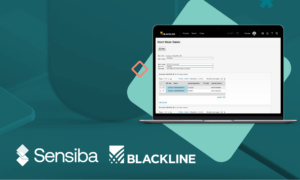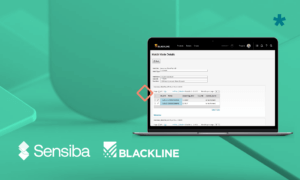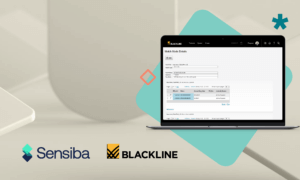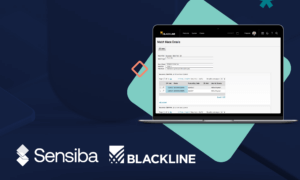In today’s dynamic business landscape, organizations face the challenge of analyzing and managing financial variances effectively. BlackLine’s Variance Analysis tool offers a powerful solution that enables businesses to gain valuable insights into financial performance, make informed decisions, and enhance operational efficiency.
Variance analysis plays a crucial role in effective financial management by enabling organizations to gain a deeper understanding of financial performance. Variance analysis helps you assess profitability, identify areas of improvement, and align strategies with financial goals. Moreover, it helps your organization enhance decision-making processes by providing insights into cost drivers, revenue fluctuations, and other key factors influencing your financial outcomes.
How BlackLine’s Tool Works
BlackLine Variance Analysis is a robust tool that enables organizations to analyze and understand deviations between planned and actual financial results. By providing a comprehensive view of variances, the tool empowers financial professionals to evaluate performance, identify trends, and implement corrective actions.
The tool encompasses various types of variances, including revenue, expenses, production, and budget. Revenue variances analyze discrepancies between actual and expected revenue, while expense variances assess differences between expected and actual expenses. For manufacturing organizations, production variances focus on analyzing variations in production costs. Finally, budget variances evaluate deviations from planned budgets.
Benefits of Variance Analysis
Effective variance analysis offers numerous benefits to organizations:
- Enhanced financial performance evaluation: Variance analysis enables organizations to evaluate financial performance more accurately and comprehensively. By analyzing variances, businesses can identify key drivers of performance and gain insights into the factors influencing positive or negative outcomes. This facilitates effective performance evaluation and aids in making data-driven decisions.
- Improved decision-making processes: By providing a deeper understanding of financial variances, variance analysis equips organizations with better information for making informed decisions. Financial professionals can identify cost-saving opportunities, optimize resource allocation, and prioritize initiatives that drive growth and profitability.
- Increased operational efficiency: Optimizing variance analysis allows organizations to streamline financial processes and improve operational efficiency. By identifying inefficiencies, bottlenecks, and areas of waste, businesses can implement process improvements and cost-saving measures. This leads to greater operational effectiveness and resource optimization.
- Better risk management and mitigation: Variance analysis helps organizations identify and mitigate financial risks. By monitoring variances and analyzing their root causes, businesses can identify potential areas of vulnerability and take preventive measures. This strengthens risk management practices and enhances overall financial control.
Six Strategies for Optimizing Variance Analysis
To maximize the benefits of variance analysis, organizations can implement these strategies:
1. Implementing advanced data analysis techniques
Leveraging advanced data analysis techniques, such as statistical modeling and data visualization, allows organizations to gain deeper insights from variance analysis. Through these techniques, businesses can uncover patterns, correlations, and trends within their financial data, enabling more accurate and meaningful analysis.
2. Utilizing automation and technology
Automation and technology, including artificial intelligence (AI), can significantly enhance the efficiency and effectiveness of BlackLine Variance Analysis. Automated data collection and integration, coupled with AI-powered analytics, accelerate the analysis process, reduce manual effort, and provide real-time insights.
3. Establishing clear variance analysis methodologies
Organizations should establish standardized and transparent variance analysis methodologies to ensure consistency and accuracy in the analysis process. Clear guidelines and defined metrics for evaluating variances enable meaningful comparisons and facilitate effective decision-making.
4. Ensuring accurate and timely data collection
Timely and accurate data collection is essential for reliable variance analysis. Organizations should establish robust data collection processes that ensure data integrity and completeness. This includes implementing proper controls, validation mechanisms, and automated data feeds from relevant systems.
5. Enhancing collaboration between departments
Optimizing variance analysis requires cross-functional collaboration. Finance teams must actively engage with other departments, such as operations and sales, to gain a comprehensive understanding of the factors driving variances. This collaboration facilitates more accurate analysis and the development of effective corrective measures.
6. Conducting regular training and development for financial personnel
Investing in the training and development of financial personnel is vital to optimize BlackLine Variance Analysis. Training programs should focus on developing analytical skills, deepening understanding of financial data, and ensuring proficiency in using the tool effectively.
Unlock the Power of the BlackLine Variance Analysis Tool
Optimizing BlackLine Variance Analysis empowers organizations to gain valuable insights into financial performance, make informed decisions, and enhance operational efficiency. By prioritizing strategies such as advanced data analysis techniques, automation, standardized methodologies, accurate data collection, collaboration, and training, businesses can unlock the full potential of this powerful tool. Investing in optimizing BlackLine Variance Analysis enables organizations to maximize their financial management capabilities and achieve sustainable growth.
Prioritize and invest in optimizing BlackLine Variance Analysis today to unleash the true power of financial insights and drive your organization’s success. Schedule a free consultation today with one of our certified BlackLine implementation professionals.
















